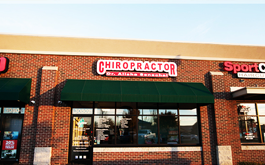
We use a wide variety of chiropractic adjusting techniques in order to help reduce spinal misalignments and nerve interference. Not every person is alike, therefore, we utilize a variety of different techniques to help serve the patient and their needs. Below you will find the common techniques that are utilized at Senechal Family Chiropractic, PC.
OUR CHIROPRACTIC ADJUSTING TECHNIQUES:
- The Full Spine Diversified Technique: is one of the most widely used forms of manipulation/adjustment in chiropractic. The focus is on restoration to normal biomechanical function, and correction of subluxations through a high velocity, low amplitude thrust. This Full Spine/Diversified technique helps create motion in spinal joints with the ultimate goals of restoring structure.
- Activator Method: a gentle low-force spinal adjusting technique that utilizes specific protocols to detect spinal joint dysfunctions. Through the analysis of leg length inequality, body mechanics and neurological testing the doctor can initiate the process of restoring spinal stability. Dr. Senechal often uses this method for those who seek a gentle non hands-on adjustment.
- Thompson Technique utilizes the “Leg Length System” which is based on the work of Dr. Deerfield. Leg length discrepancy is determined by having the patient lie on special table, legs in extended position, while the chiropractor determines whether the legs are out of balance. The Thompson Technique is performed on a special drop table. The patient's own body weight is used to exert a force on the table to make the adjustment. Varying amounts of pressure of the joints initiate the drop piece motion, which in turn affects the muscle and joints.
- Extremity Adjustments: are chiropractic adjustments to joints that are not contained in the spine. These would include jaw (tmj problems) shoulder, elbow, wrist, hand, finger, hip, knee, ankle and foot. Like the spine these extremities develop joint dysfunction, which describes a joint that has reduced motion, abnormal muscle tone, inflammation, scar tissue or arthritic changes. Common names for some joint dysfunctions include, “carpal tunnel syndrome“, “tennis elbow“, “little league elbow“, “frozen shoulder“, “runner knee“, “golfers elbow”, and a host of others. In all cases, Chiropractic Care takes a natural and common sense approach for treatment. Extremity adjustments are a type of joint mobilization similar to that of spinal adjusting, with the goal being, to restore normal motion to areas that have been “locked up”. Once restoration of motion has been returned to the extremity there is often a reduction in pain, improved motion, relaxed muscles, reduced nerve interference and promotion of healing.
- Webster Technique: is specifically designed for pregnant mothers whose baby is presenting in the breech position. The Webster protocol is a specific chiropractic sacral analysis and diversified adjustment. The goal of the adjustment is to reduce the effects of sacral subluxation/SI joint dysfunction. In so doing neuro-biomechanical function in the pelvis is facilitated. The Obstetric literature has determined that correct positioning of the baby in-utero affects birth outcome and decreases the potential for undue stress to the baby's developing spine and nerve system. Obstetric literature has also determined the importance of pelvic neuro-biomechanics for the prevention of dystocia (difficult birth). Chiropractic literature has determined the significance of sacral adjusting in normalizing pelvic neuro-biomenchanics. Dr. Senechal is certified through the International Chiropractic Pediatric Association in Webster Technique. The technique is gentle and safe for those who are pregnant. Click here to learn more about the Webster Technique
OUR PHYSIO-THERAPY TREATMENTS:
At our office we also offer a wide variety of physio-therapy modalities to help ease pain and speed the healing process. Below you will find a description of the variety of different treatments we offer:
Intersegmental Traction
Intersegmental traction is an effective chiropractic therapy that induces passive motion into the spine for the purpose of stretching spinal joints and increasing mobility. Intersegmental traction helps to gently and effectively reestablish normal range of motion to your spine. It also facilitates muscle relaxation to significantly reduce muscle spasms. Whether you’re a professional athlete, runner, or just someone who often exercises, the stress and trauma to your spine can be debilitating-especially with age and wear and tear.
Intersegmental traction is delivered through the use of a traction table. You lay down on the table (on your back) and there are rollers just underneath the surface of the table. These rollers can be adjusted depending on your chiropractic condition and weight to gently and specifically elongate and stretch your spinal joints and muscles. This helps to reduce muscle spasms and increases your range of motion for your spinal joints (each vertebrae). When your muscles become more relaxed and vertebrae begin to move normally, your vertebral discs now have their normal space and can return to their normal position and functioning. This also helps to prevent abnormal wear and tear on the vertebral discs and prevents further injury and reduces the arthritis process.
Interferential Current Therapy (IFC)
Interferential Current Therapy (IFC) is a noninvasive therapy indicated for the symptomatic relief from, and management of, chronic intractable pain and post-surgical and post-trauma acute pain. It provides a safe and effective alternative to pharmacological approaches to pain control. IFC has minimal side effects and is non-addictive. Adverse reactions associated with electrotherapy may include skin irritation beneath the electrodes.
Interferential current therapy has been used extensively to help manage pain, edema, and inflammation due to soft tissue irritation from trauma or degenerative changes, with less dependence on narcotics.
IFC can be used for pain associated with several conditions including:
- Back pain (most common)
- Arthritis
- Strains and sprains
- Neuralgia
- Reflex Sympathetic Dystrophy (RSD)
- Shingles
- Degenerative joint disease





